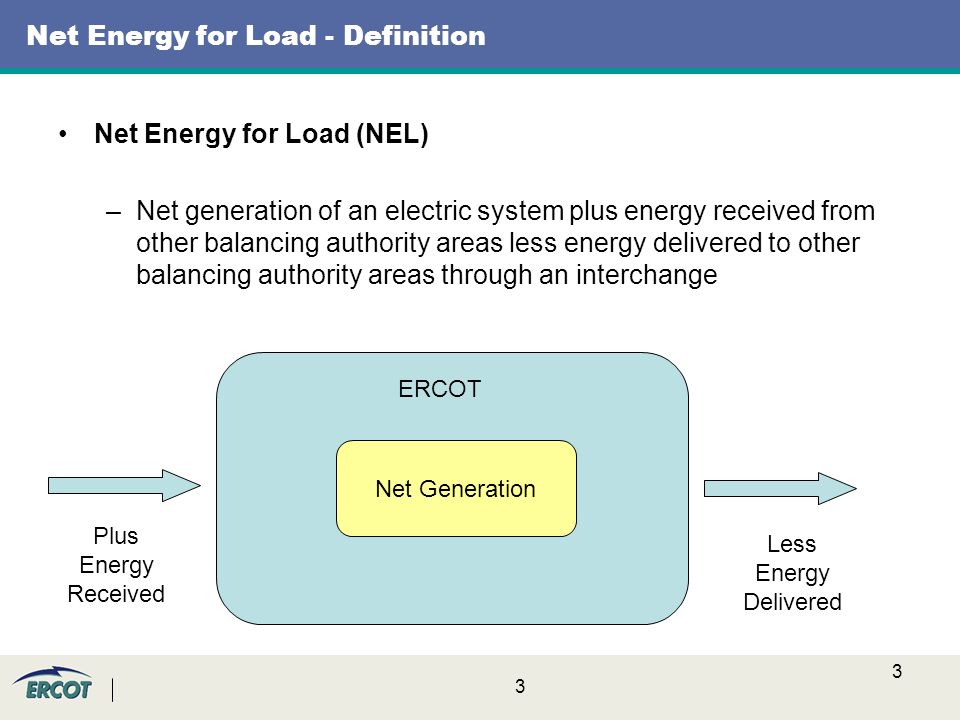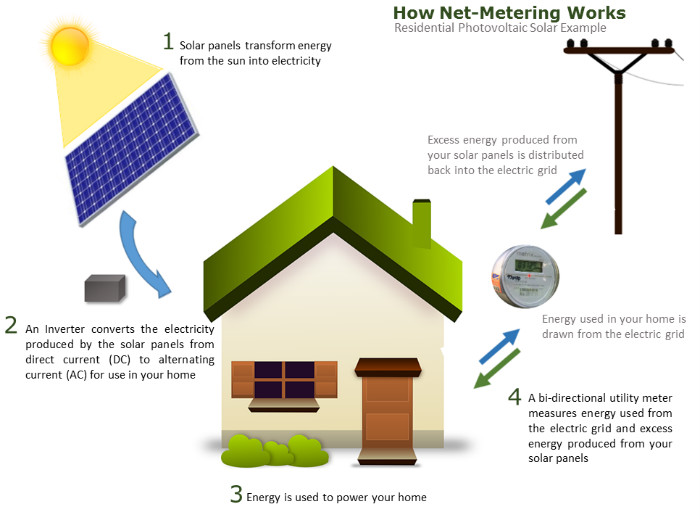No question about it. When compared to more conventional energy sources, solar power has a lot going for it.
For one thing, solar panels produce absolutely no emissions—that's in sharp contrast to all the harmful pollutants released by burning fossil fuels.
Even better. Thanks to increased panel efficiency, declining production costs, and some very generous government incentives, a simple rooftop solar system now delivers energy at a lower average price than what utility companies are charging.
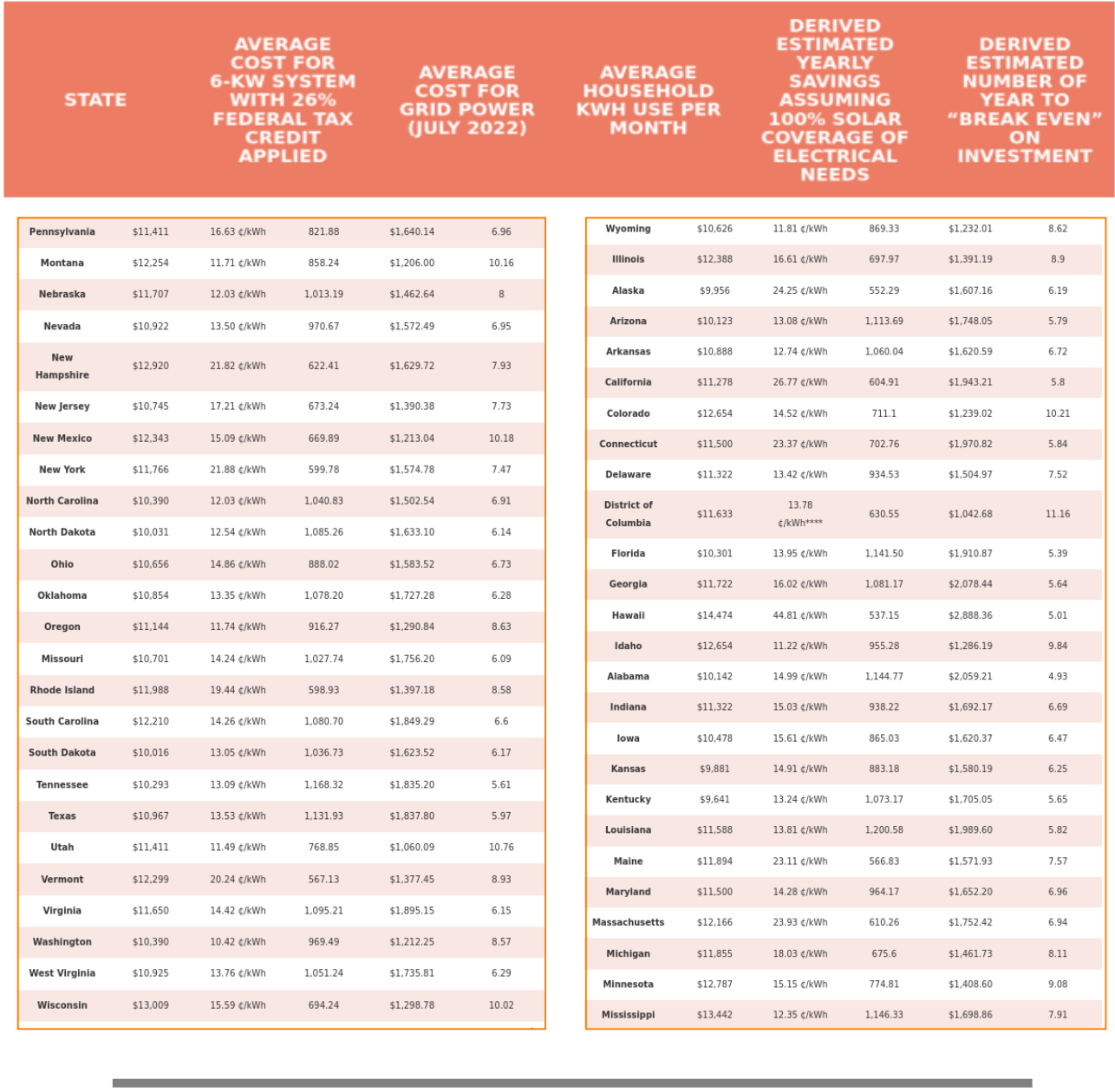
But nothing is perfect and solar energy does have certain drawbacks. Chief among them is an inherent mismatch between supply and demand represented by something called "the duck curve."
Net load
The term "duck curve" was coined in 2012 by researchers at the California Independent System Operator (ISO)—the non-profit agency tasked with overseeing the state's power grid.
They were analyzing how the growth of rooftop solar would affect the amount of energy California needs to generate hourly, aka the "net load."
Gross load refers to the total energy required to meet overall demand.
Net load equals gross load minus the amount of electricity generated by wind and solar.
Calculating the net load basically tells you how much additional energy utility companies will need to generate once the contributions of wind and solar are taken into account.
The duck curve
The problem is that there's a huge mismatch between the sun's schedule and ours.
A rooftop solar system will generate the most energy when the sun is shining at its brightest during the afternoon. But that's exactly when most homeowners will be using the least amount of power since family members are likely at work, school, or otherwise out and about.
Moreover, by the time they start returning home in the early evening and using more energy, the sun will have mostly set. That means no solar power whatsoever when demand is highest.
The result is that as the number of rooftop solar installations increases, the graph of hourly net load starts to take on the shape of a duck. The line descends in the afternoon as solar energy production ramps up and starts offsetting the amount of energy needed from power plants. It then starts rising in the early evening when the production of solar energy stalls.
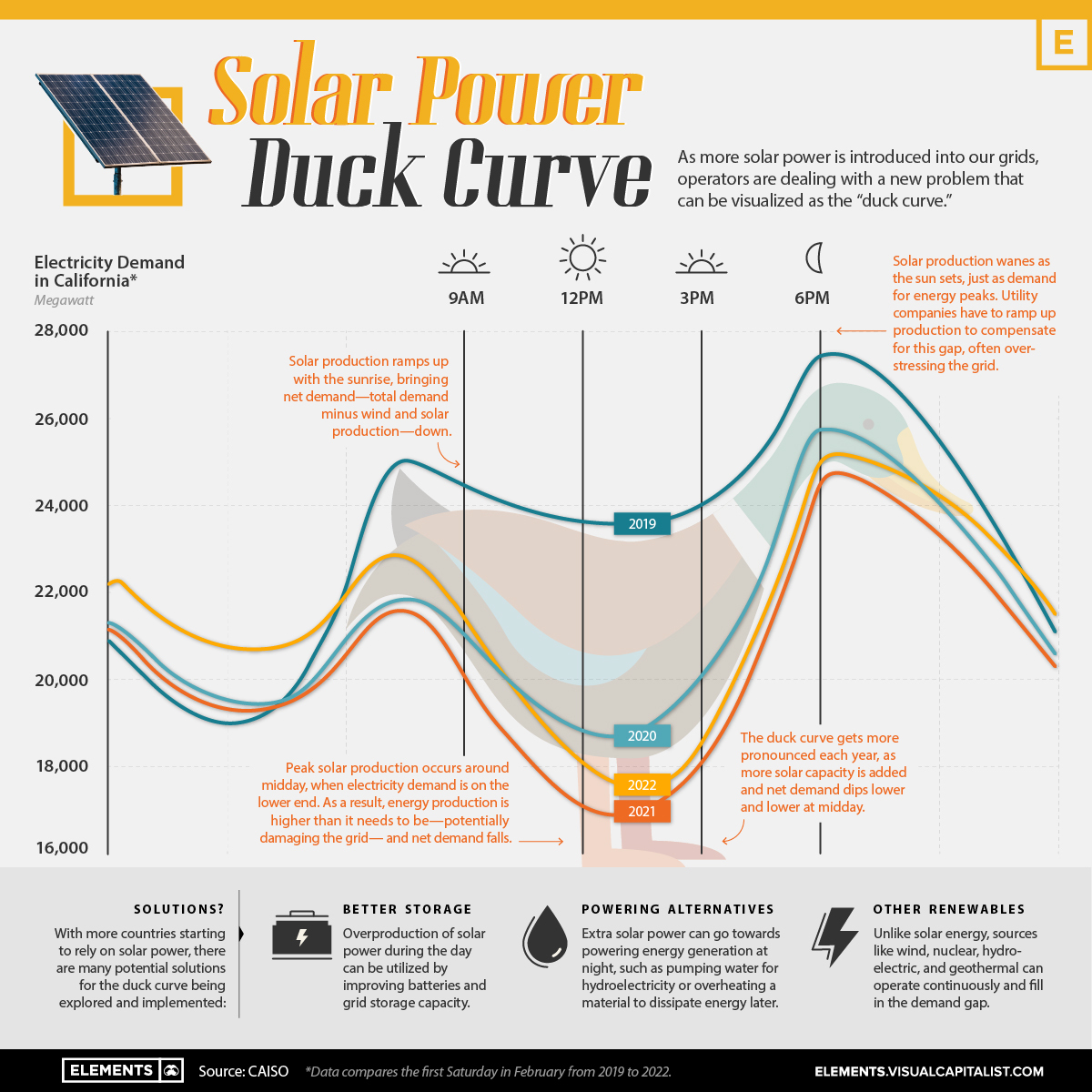
Straining the grid
The mismatch between solar energy supply and overall demand creates several problems.
Power plants that burn fossil fuels are only efficient when they're constantly running. If they have to be turned off during the middle of the day because solar power is meeting most of the demand, power plants become economically unfeasible.
As the number of solar installations increases, the amount of power utilities need to deliver during the day decreases. But that means utilities have to ramp up production even more in the early evening to meet increased energy consumption as people return home, putting stress on a grid that wasn't designed for sudden peaks.
Solutions
All hope is not lost, however, as there are several ways to flatten that duck-shaped curve.
- Energy Storage: Improving batteries and grid storage capacity would preserve more of the excess solar power generated during the day for use at other times.
- Powering Alternatives: Surplus solar power can also be used to set up night-time energy generation, e.g., pumping water for hydroelectricity or overheating a material to dissipate energy later.
- Other Clean Sources: Other clean energy sources that operate continuously like hydroelectric, and geothermal can be used to fill the evening energy gap.
Net metering
That duck-shaped curve doesn't just create problems for the overall power grid, however. It impacts individual homeowners as well.
After all, a solar system that generates all the energy you need isn't of much use if it's all being produced in the afternoon when nobody's home.
Without some means of storing it, most of the surplus energy your solar system generates during the day will simply go to waste— forcing you to buy power from a utility company the bulk of the time when there's little or no sun.
Adding a solar storage battery would, of course, solve this problem nicely.
But while adding storage to your solar system also brings other advantages like providing power during blackouts, in states like Pennsylvania that have enacted a policy called, "net metering," it isn't necessary.
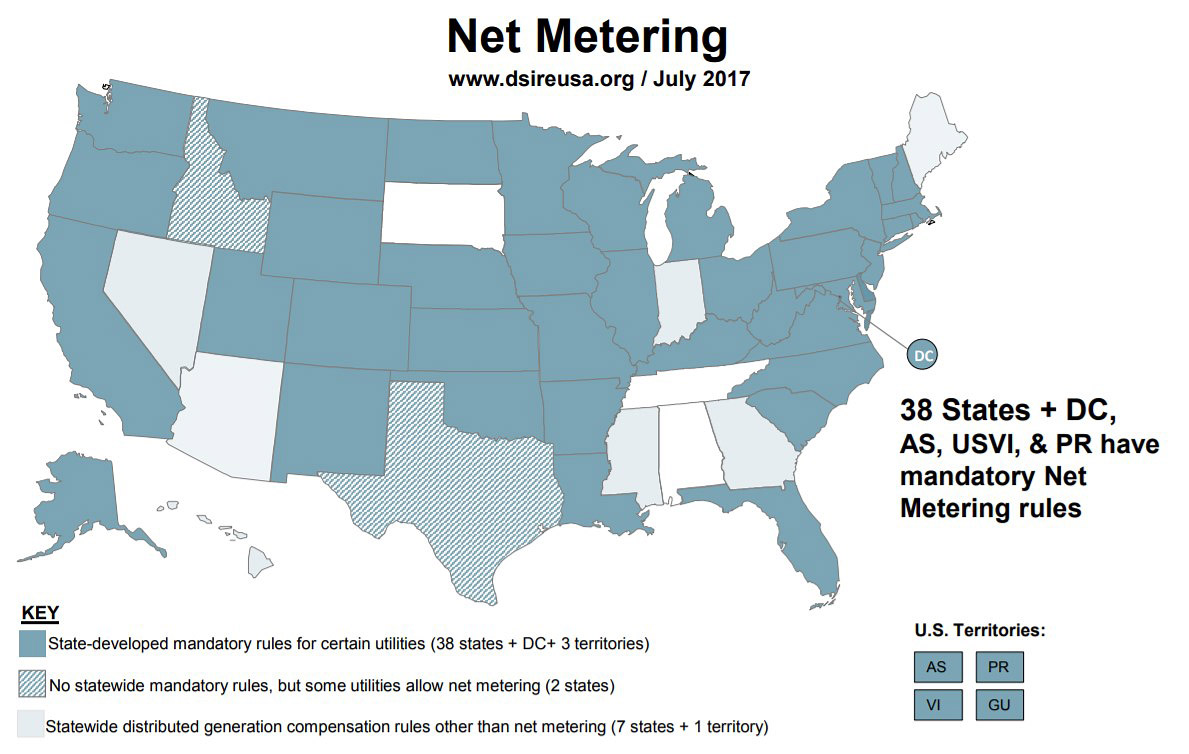
Net metering means that utility companies are not only required to buy back any surplus solar energy produced by your solar system—they also have to pay the very same rate you're charged when you need to draw power.
Net metering, thus, effectively lets you "bank" the surplus power your panels produce during the day for later use even if you decide not to add a battery to your solar system.
